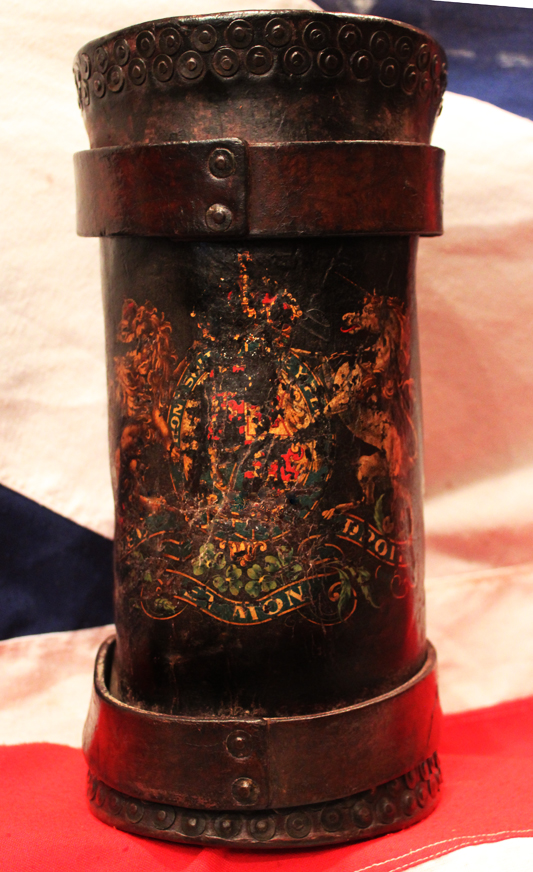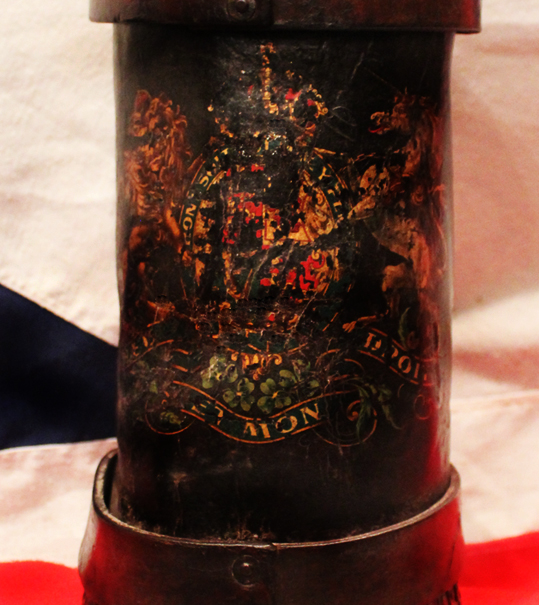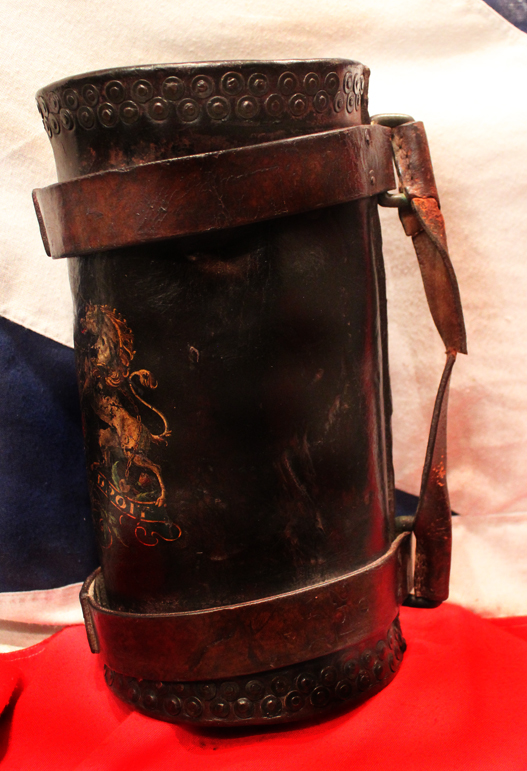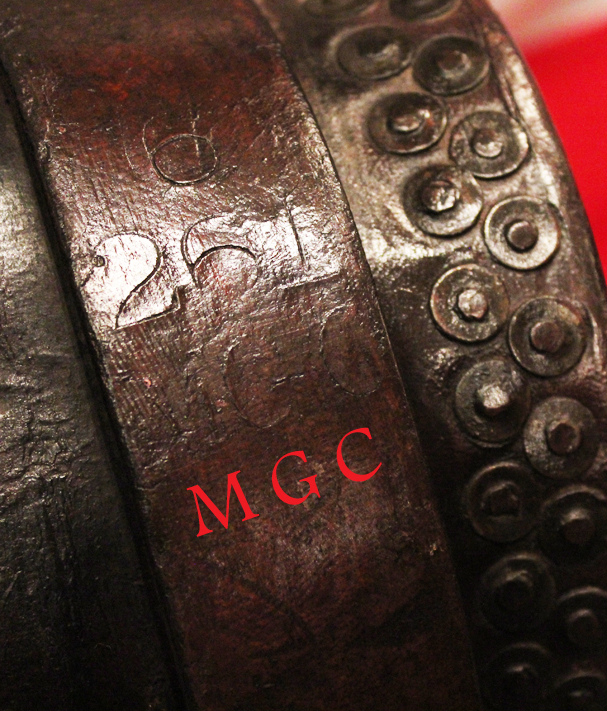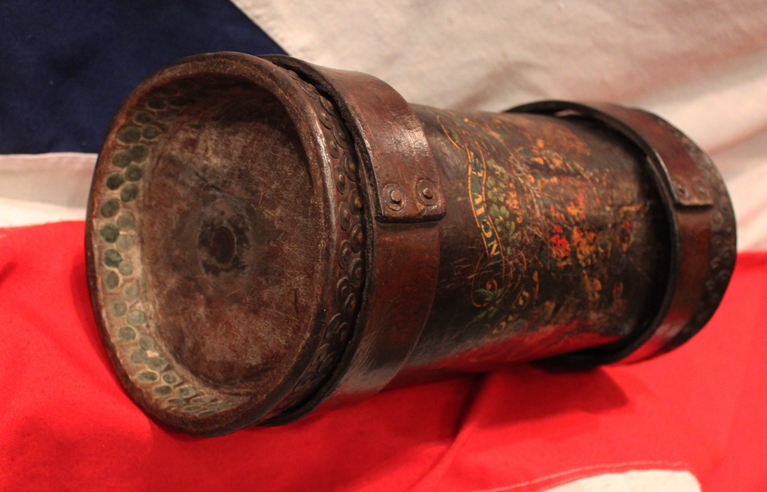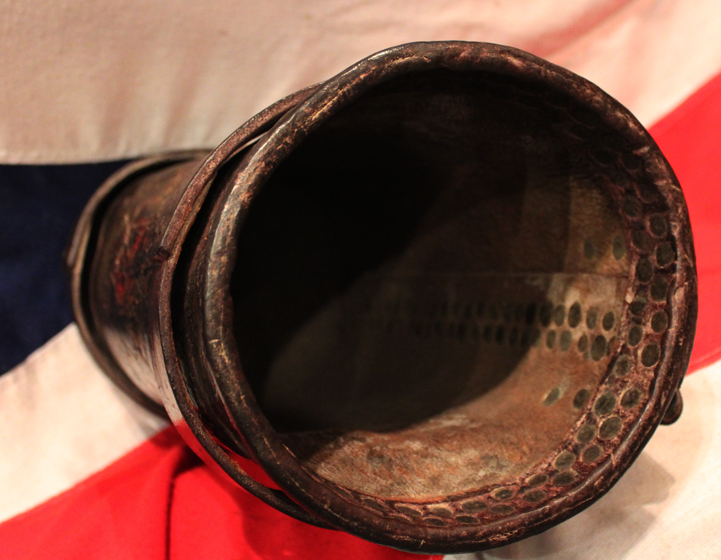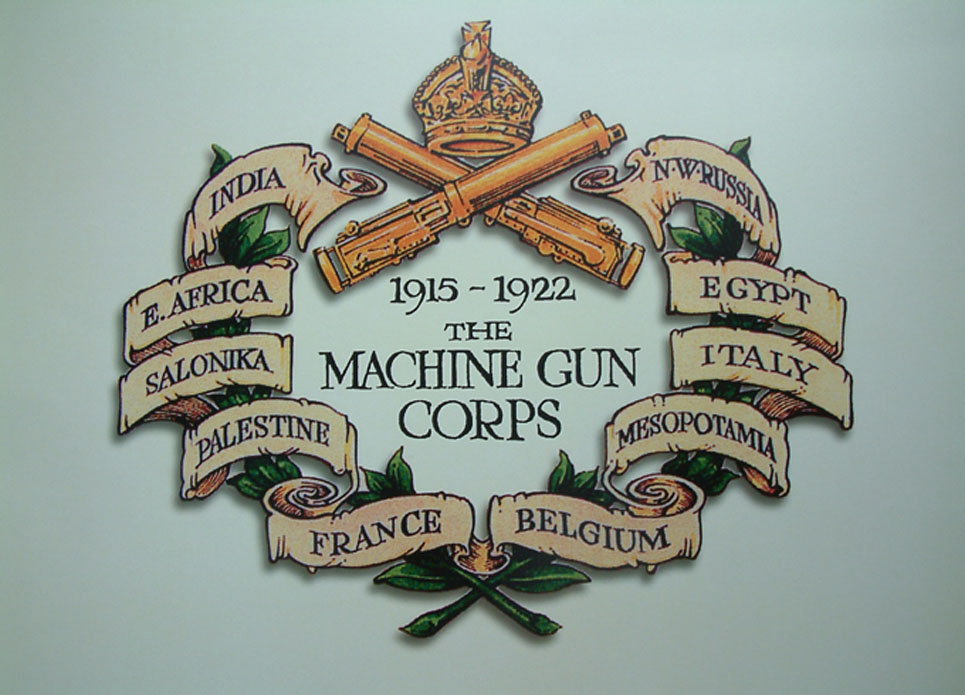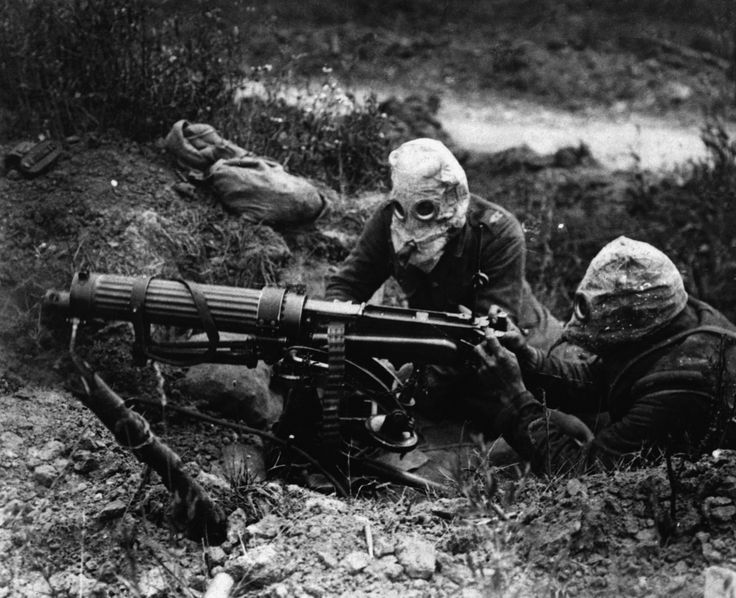A Superb Original Antique WW1 Leather Machine Gun Company Munition Case. A Very Rare Piece as Most Surviving Cases Were For Cordite For the Artillery, But the Machine Gun Corps Example is Very Rare Indeed
Part of a Superb WW1 Machine Gunner's Collection, British and German.
WW1 issue. Bearing the royal crest of King George Vth and British Army stamped for the 6th, 261 Machine Gun Company 6 261 MGC. Substantially strong and robust hardened buffalo hide. This is a particularly rare type, not the usual Royal Artillery version.
It is of very heavy grade solid leather, that is top, bottom and side, brass seam riveted, and with a wide leather carrying strap at the rear. The more common version used by the British army was a cordite carrier type, that are plain, lightweight and have no rivets, cork lined and are wide rim banded top and bottom. At the outbreak of the First World War in August 1914, the tactical potential of machine guns was not appreciated by the British armed forces. The prevalent attitude of senior ranks at the outbreak of the Great War can be summed up by the opinion of an officer (albeit expressed a decade earlier) that a single battery of machine guns per army corps was a sufficient level of issue.
Despite the evidence of fighting in Manchuria (1905 onwards) the Army therefore went to war with each infantry battalion and cavalry regiment containing a machine gun section of just two guns.
These organic (embedded) units were supplemented in November 1914 by the formation of the Motor Machine Gun Service (MMGS) administered by the Royal Artillery, consisting of motor-cycle mounted machine gun batteries.
A machine gun school was also opened in France.
After a year of warfare on the Western Front it was self-evident that to be fully effective - in the opinion of former sceptics - that machine guns must be used in larger units and some commanders advocated crewing them with specially trained men who not only thoroughly conversant with their weapons but who understood how they should be best deployed for maximum effect. To achieve this, the Machine Gun Corps was formed in October 1915 with Infantry, Cavalry, and Motor branches, followed in 1916 by the Heavy Branch. A depot and training centre was established at Belton Park in Grantham, Lincolnshire, and a base dep?t at Camiers in France.
The Infantry Branch was by far the largest and was formed by the transfer of battalion machine gun sections to the MGC. These sections were grouped into Brigade Machine Gun Companies, three per division. New companies were raised at Grantham. In 1917, a fourth company was added to each division. In February and March 1918, the four companies in each division were formed into a Machine Gun Battalion.
The Guards Division formed its own machine gun support unit, the Guards Machine Gun Regiment.
The Cavalry Branch consisted of Machine Gun Squadrons, one per cavalry brigade.
The Motor Branch was formed by absorbing the MMGS and the armoured car squadrons of the recently disbanded Royal Naval Armoured Car Service. It formed several types of units: motor cycle batteries, light armoured motor batteries (LAMB) and light car patrols. As well as motor cycles, other vehicles used included Rolls-Royce and Ford Model T cars.
The Heavy Section was formed in March 1916, becoming the Heavy Branch in November of that year. Men of this branch crewed the first tanks in action at Flers, during the Battle of the Somme in September 1916. In July 1917, the Heavy Branch separated from the MGC to become the Tank Corps, later called the Royal Tank Regiment.
The MGC saw action in all the main theatres of war, including France, Belgium, Palestine, Mesopotamia, Egypt, Salonika, East Africa and Italy. In its short history, the MGC gained an enviable record for heroism as a front line fighting force. Indeed, in the latter part of the war, as tactics changed to defence in depth, it commonly served well in advance of the front line. It had a less enviable record for its casualty rate, with 62,049 becoming casualties, including 12,498 killed, earning it the nickname 'the Suicide Club'.
A fabulous and beautiful artifact of WW1 Machine Gun Corps history, that is now perfectly useable as a stunning display piece, or stick stand or waste paper basket. Top section of rear leather strap handle is now detached, but it should be easily repairable. 14 inches high x 7.5 inches across
Code: 20353
795.00 GBP

